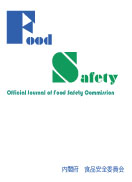Volume 2, Issue 3
Displaying 1-8 of 8 articles from this issue
- |<
- <
- 1
- >
- >|
Review (Invited)
-
Article type: Review (Invited)
2014 Volume 2 Issue 3 Pages 37-54
Published: 2014
Released on J-STAGE: September 30, 2014
Download PDF (4722K) Full view HTML
Risk assessment report: Prions
-
Article type: RAR (Full Report)
2014 Volume 2 Issue 3 Pages 55-128
Published: 2014
Released on J-STAGE: September 30, 2014
Download PDF (17897K) Full view HTML
Risk assessment report: Pesticides
-
Article type: RAR (Exeutive Summary)
2014 Volume 2 Issue 3 Pages 129-131
Published: 2014
Released on J-STAGE: September 30, 2014
Download PDF (484K) Full view HTML -
Article type: RAR (Summary)
2014 Volume 2 Issue 3 Pages 132-133
Published: 2014
Released on J-STAGE: September 30, 2014
Download PDF (450K) Full view HTML
Risk assessment report: Veterinary Medicinal Products
-
Article type: RAR (Summary)
2014 Volume 2 Issue 3 Pages 134-135
Published: 2014
Released on J-STAGE: September 30, 2014
Download PDF (471K) Full view HTML
Risk assessment report: Pesticides
-
Article type: RAR (Summary)
2014 Volume 2 Issue 3 Pages 136-137
Published: 2014
Released on J-STAGE: September 30, 2014
Download PDF (457K) Full view HTML
Risk assessment report: Apparatuses, Containers and Packages
-
Article type: RAR (Summary)
2014 Volume 2 Issue 3 Pages 138-139
Published: 2014
Released on J-STAGE: September 30, 2014
Download PDF (474K) Full view HTML
Risk assessment report: Genetically Modified Foods and Feeds
-
Article type: RAR (Summary)
2014 Volume 2 Issue 3 Pages 140
Published: 2014
Released on J-STAGE: September 30, 2014
Download PDF (487K) Full view HTML
- |<
- <
- 1
- >
- >|
